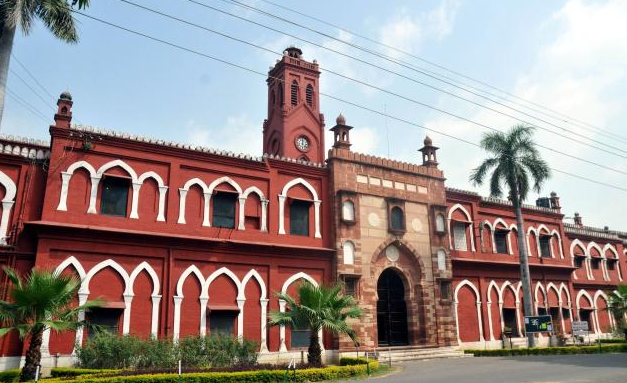Context:
Recently, the Supreme Court was hearing a reference related to the minority status of Aligarh Muslim University.
About Aligarh Muslim University (AMU):
- In 1875, AMU was established as Muhammadan Anglo-Oriental (MAO) College.
- Founder: Sir Syed Ahmad Khan
- Pre-independence: During the colonial era, the Aligarh Muslim University (AMU) Act, 1920 was passed which enabled MAO and a few colleges to be affiliated with it.
- Post-independence: The Union government passed two amendments to the AMU Act in 1951 and 1965 which changed the structure of the governing body and gave powers to the President of India to nominate its members.
- AMU is ranked 9th across universities by the Ministry of Education’s National Institutional Ranking Framework (NIRF) in 2023.
Issue with AMU:
- In the S. Azeez Basha vs Union of India (1967) case, the Supreme Court (SC) ruled that the AMU was not a minority institution as there was central legislation governing the same.
- The Centre via the AMU (Amendment) Act, 1981 restored the minority status of the university which permits it to make reservations for the Muslim community in India.
- In 2006, the Allahabad High Court, however, struck down the provision of the 1981 law by which the university was accorded minority status.
- The case ultimately reached the Supreme Court, and the issue was referred to 7 seven-judge bench in 2019.
View regarding AMU status:
Centre’s stand:
- The government said that the AMU was not and could not be a university of any particular religion or religious denomination.
- It said a university is declared as an institution of national importance and cannot be a minority institution.
- Hence, if it is declared as a minority institution it will not be required to implement the reservation of the government.
AMU’s stand:
- The University had contended that it was established to educate and empower the Muslim community.
- The essential thing that a minority community wants is the right to retain their identity and to be part of the national life and mainstream.
- The AMU contended that it was a minority institution and did not lose its character by complying with the uniform standards prescribed for varsities.
Supreme Court’s view regarding AMU:
- It observed that the right of religious and linguistic minorities to establish and administer their educational institutions under Article 30(1) of the Constitution was not to restrict them.
- Article 30 (1) says that all religious and linguistic minorities in India have the right to establish and manage their educational institutions including schools, colleges, and other educational facilities.
- The minority character of an educational institution is not lost if its founders, who belong to a particular minority community, choose administrators from other communities to run the institution.

